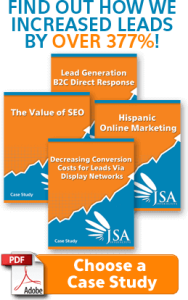Are you posting the same basic content across all of the social media platforms your business is active on? If so, you may find that your B2B social media marketing efforts just aren’t as effective as they could be otherwise. Not all social media platforms are created equal – each has its own rules and regulations, sure, but each audience is looking for something different, too. A person that is checking Facebook has certain expectations for the content they will see based on the platform’s dynamics, and that same person immediately switching over to Twitter consequently immediately switches expectations. If your social media content isn’t tailored to suit each platform, you’re missing out on making valuable connections with your followers.
Platform Specific Content Tips for B2B Social Media Marketing
Each social media platform you can use for B2B social media marketing requires a different content approach. Let’s break it down:
- Twitter – We’ll start with Twitter because Twitter gives you the least amount of space to work with. Twitter content requires the most finessing because they only allow you 140 characters to get your message across, and while that’s sufficient space in which to let the world know what you had for lunch, it’s not much when it comes to crafting marketing copy (and make no mistake, if you’re tweeting for business, then those tweets count as marketing copy). When you write a tweet, you need a good hook that you can still cram into 140 characters, so there’s no room for any extraneous thoughts. For example, if you are linking to a blog post you wrote or an interesting article you found, you could use the title of either as your tweet and provide the link, or you could take things a step further to find an interesting line within the body of the post or article itself and use that as your hook. The more unique and interesting, the better. To encourage retweeting, which should be at least partly your goal (getting people to share your content), then you need to also keep your tweets under 140 characters so as to accommodate for your Twitter name. And don’t forget about hashtags – they help others find relevant content that they’re interested in, but they won’t find yours if you don’t have the hashtag in there.
- Facebook – Facebook gives you a lot more room to work with than Twitter does, so you can get much more in-depth. You still need to tailor your content for your purpose and your audience, however. The kinds of posts you’d make to a personal account or a B2C account and the tone you’d take with either aren’t necessarily appropriate for a B2B business’s Facebook page. Your Facebook posts should be personable but professional and take into account exactly who follows you and why. Aim for posting items that open up a dialogue and generate and foster actual discussion among your followers. If you link to an article or blog post, don’t just post the title or a line from the piece with a link like you’d do with Twitter. Use it as an opportunity to ask a question of your own readers in order to get a conversation going.
- LinkedIn – Of all the platforms we’re looking at today, LinkedIn is the one made for B2B social media marketing. When you update your LinkedIn profile, you can rest assured that most of the people that could end up seeing it are business professionals, so there’s one weight off your shoulders. All you need to worry about now is speaking to them correctly. While LinkedIn gives you much more room to work with, much like Facebook, LinkedIn is aimed specifically at business professionals, and business professionals tend to be pretty busy people – to up your chances of being heard, stick to the facts and keep it as short and sweet as you can. If you’re posting to multiple different groups on LinkedIn, tailor each posting to suit the group you’re updating. Using the same headline everywhere looks spammy and taking the extra moment to address B2B marketers in a B2B marketing group and management professionals in a management group helps.
The most important takeaway here is to pay attention to the needs of the platform and the needs of your audience when they are using that platform. Since it differs from site to site, so should your content, even if you’re posting about essentially the same thing each place.
[single_callout/]













